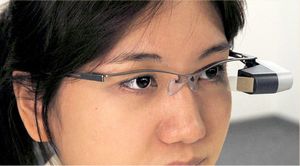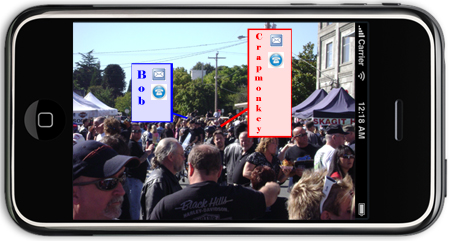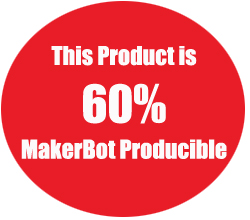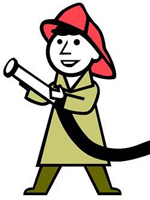Generally speaking, I’ve noticed some glaring differences in the cultures of the craft brewing industry and the technology industry. Without a doubt, these industries are very different and I wouldn’t expect them to behave identically. Still, there are a few key ways the tech world could benefit by following the lead of the craft brewing industry.
1. In the craft brewing industry, competitors help each other out.
In tech, especially in recent years, it seems as though companies are waiting on baited breath for their competitors to stumble or fall on hard times. Any misfortune is an opportunity to pounce and win valuable market share. In the brewing industry, companies have the greater good of the beer at heart. For example, few beer lovers can forget the hops shortage of 2007 when poor weather, fungal outbreaks, and a significant hops warehouse fire caused a significant shortage in global hops availability. The shortage was so severe, some brewers ran the risk of not being able to acquire hops at all, and others were facing a decision to alter their recipes to utilize hop extracts. A moment like this can create a significant advantage for breweries like Samuel Adams Boston Lager who, due to their size, had a multi-year lock on hops purchase contracts and lucrative volume pricing. However, instead, Samuel Adam’s ”looked at our own hops supplies at Boston Beer and decided we could share some of our hops with other craft brewers who are struggling to get hops this year.” CEO Jim Koch announced a program to sell hops to struggling breweries at the same volume discounted cost they paid for them. “The purpose of doing this is to get hops to the brewers who really need them,” Koch said. Similarly, last year in Ottowa, a small Ottowa brewery needed help expanding to keep up with demand. Help came from an unlikely place, local competitor, Beau’s All-Natural Brewing Company. Beau’s loaned the brewery two bright tanks (used condition and bottle beer) enabling the Ottowa brewery to double capacity. According to Beau’s Co-Founder, Steve Beauchesne, “In any other industry, helping a competitor would seem odd. But one of the best things about being in the craft beer world is our interest in seeing the craft movement succeed. When we started Beau’s almost seven years ago we were helped tremendously by Church Key Brewing in Campbellford, and without their help I don’t know how we would have made it past our first year.”
2. In the craft brewing industry, nobody is positioning themselves to be bought out.
More times than I care to admit, I’ve encountered entrepreneurs in the tech industry that are launching companies with the ultimate goal of being bought out. Time and again I’ve been quietly unimpressed to hear someone describe their company as “well structured for a buy out” or focused on a 3 to 5 year “exit strategy.” I’m not alone in being turned off by this attitude, according to entrepreneur and venture capitalist, David Skok, “I am far more interested in finding entrepreneurs that have no thoughts of exit, and who would love to see their company become a leader in its field, and stay with it as it undergoes that journey.” Brewers are typically into their breweries for the long haul. Certainly, it’s not the kind of industry that lends itself to buy outs and acquisitions in quite the same way that the tech sector does, but regardless, brewers are typically driven by the drive to embark on a labor of love. Brock Wagner, owner of Saint Arnold Brewing Company puts it best. “From the business standpoint, brewing really doesn’t make sense to do,” says Brock. “Having said that, you do it because you love it.” Kore Donnely, co-owner of Blue Stallion Brewery puts it this way, “The best thing about opening a brewery is that we can see ourselves making a living doing something that we really like doing.”
3. In the craft brewing industry, competitors embrace each other’s products.
If you’ve ever attended a brewfest or a brewers conference, you can’t help but notice that brewers are often the biggest attendees and fans. Brewers love to share their beers with each other and try the artistic creations of other brewers. In the tech industry (and I’ve been guilty of this myself) there is often a fanatical cult-like mentality surrounding product allegiance. I’m not saying that a passion for your products is bad, to the contrary, passion is a wonderful and abundant trait in the tech industry. But with that passion often comes a blind shunning of any competitive product. The longstanding feud between Microsoft loyalists and Apple diehards is evidence of this phenomena. It’s one or the other… never both. Contrarily, beer makers regularly step across partisan lines in the name of tasting something new and delightful. I still remember being slightly taken aback several years ago during a reception at a brewers conference when I asked then CEO of Pyramid Brewery, George Hancock, to tell me his favorite beer. I expected that I had asked a somewhat rhetorical question and that he would quickly rattle off a beer from the Pyramid line. Instead, he looked across the many different beers represented by the gathered brewers and then looked back to me and said, “that’s a lot like asking someone which of their children they like the most.”





